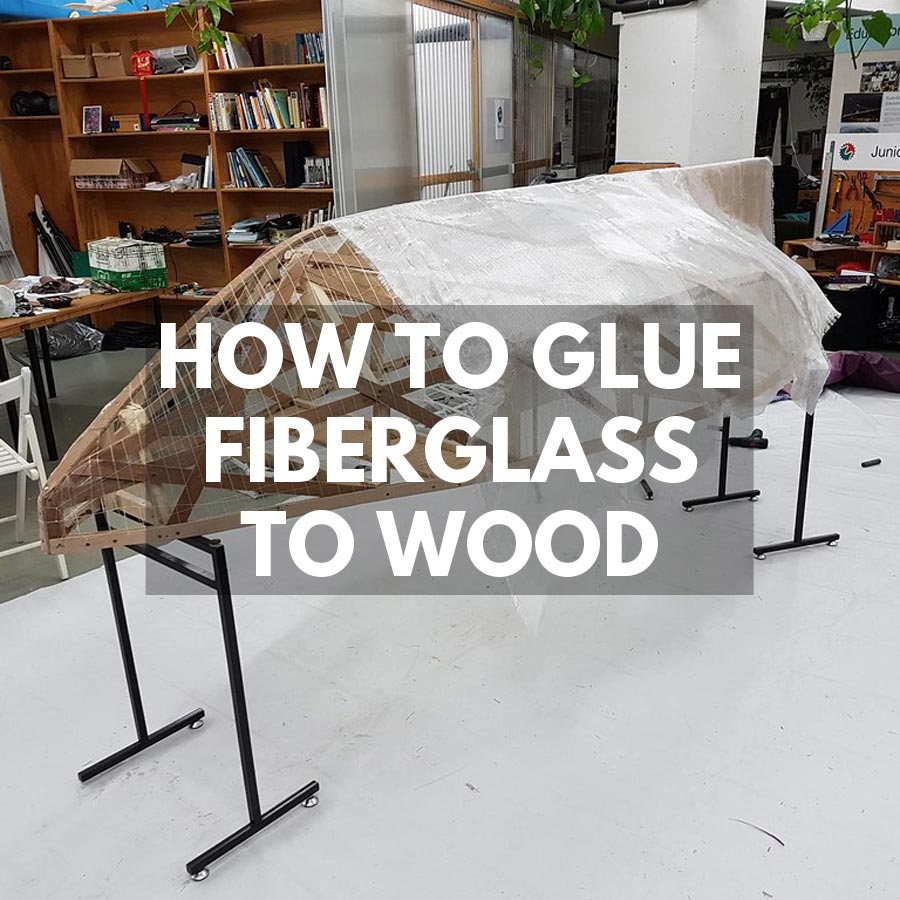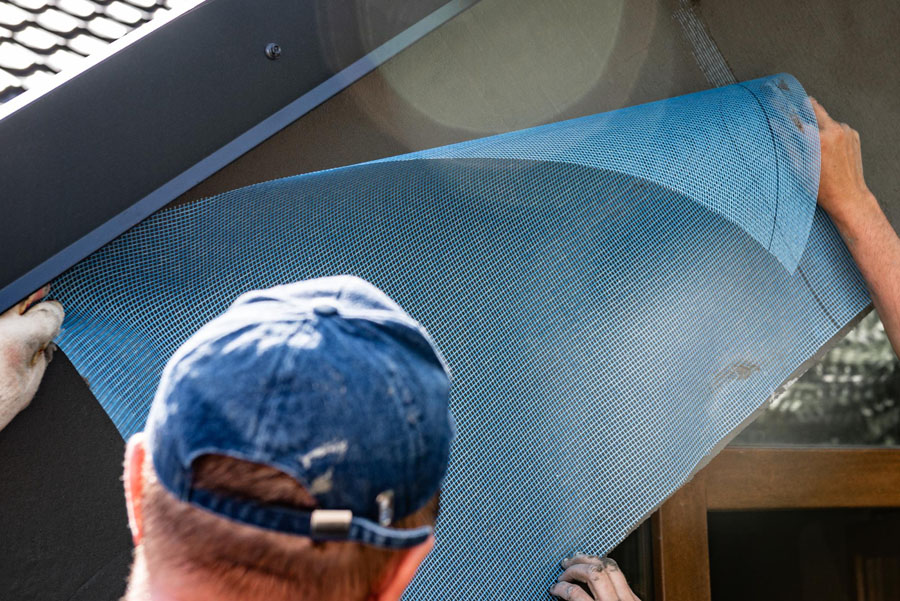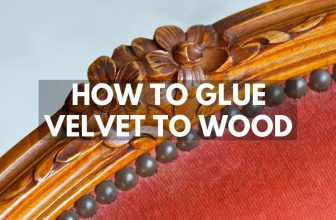
How to Glue Fiberglass to Wood
In this guide, we explain how to glue fiberglass to wood from the preparation stage to the curing stage. You will learn which glue works best on both surfaces and why Epoxy Resin is the right adhesive for this task.
The best possible option for gluing fiberglass to wood is epoxy resin, closely followed by polyurethane adhesive or silicone adhesive. Each of these adhesives is the perfect choice for long-term adhesion but there are limitations when using them. This is why we recommend using epoxy resin to apply fiberglass to wood or to bond wood to solid fiberglass.
Because wood is being glued to fiberglass each adhesive may need to have limited flexing involved for these parts such as wings or boat hulls. Epoxy resin will not flex and works well with both materials so this is good for rigid applications.
Additional clamping or bonding these two materials together will help reduce migration or slipping while each of these adhesives is curing. Due to the pros and cons of how these adhesives are used, these choices present an opportunity that each presents for the desired application.
Which Glue Should you Use for Fiberglass to Wood?
Epoxy Resin
Using epoxy resin to glue rubber to metal is a good option when there is plenty of time to allow the epoxy to completely cure. The resin is mixed in a two-part mixture and then applied to one surface and then attached to the other. It must be held in place until it cures using clamps or anything that holds these two together in direct contact with one another. It’s also good to use if there are large or small surface areas to cover.
Because the epoxy takes the longest among these adhesives, the chemical curing must be completed so the adhesion is 100%. This can often take anywhere from 3 hours to 24 hours for a completed cure time.
Polyurethane Glue
Polyurethane glue is also called PU glue and will appear in various formulas related to its usage. For gluing fiberglass to wood, it’s best to use PU glue that is flexible such as Gorilla glue or Titebond which will not damage the fiberglass as other PU glues can. Some PU glues come in small tubes and have a gel-like consistency but most polyurethane glue comes in a rounded glue bottle shape. The polymer chains create an excellent bond between fiberglass and wood that is permanent.
PU glue is also a single component and will need little preparation and light clamping while the curing time is allowed. It can take a full day for polyurethane glue to gain its full strength. Polyurethane adhesive does need ventilation that will linger so adequate ventilation is advised to keep the odors from becoming too overbearing.
Silicone Adhesive
This is a great choice for gluing fiberglass to wood since silicone bonds permanently to fiberglass. The grain texture of the wood is also ideal for silicone since the silicone grabs onto the fibers very nicely. There is very minor preparation to get these two surfaces to bond well but does take time to gain a complete cure. It’s advised not to use commercial caulking since the bonding strength is not as good as silicone adhesive.
For smaller jobs, a small squeeze tube is all that’s needed, but larger jobs will be better off with a larger tube. This larger tube also needs a caulking gun to squeeze out the silicone. Silicone adhesive does have a strong vinegar-like smell so ventilation is advised so the smell isn’t overwhelming.
How to Prepare Fiberglass and Wood
Fiberglass needs to be sanded using a medium grit around 200-500 grit sandpaper. If the fiberglass isn’t too uneven, light sanding for flat surfaces is fine. A sanding block helps smooth out rough surfaces if these were using matt that isn’t so evenly applied. Wood is absorbent unless happens to be hardwood so there isn’t much prep needed except for a light sanding to rough up the surface.

How to Apply Glue to Fiberglass and Wood
Using epoxy resin or silicone is easier by using a pop stick or flat spatula item. Plastic spatulas that are found at the paint and hardware stores work best to thin out glue onto a large surface, while a pop stick is good for small areas only. Polyurethane glue works well using a paintbrush or spatula. Spread a thin layer on the wooden side to prevent air pockets and another thin layer onto the fiberglass and put these pieces together.
Silicone glue will need to be squeezed from a tube whereas epoxy can be spread onto the surface once it’s mixed. Always use gloves when working with epoxy, silicone, or polyurethane glue.
How to Cure Wood and Fiberglass Glue
Epoxy resin and silicone will cure better when the temperature of the room is increased past room temperature. Anything above 75 degrees Fahrenheit is good to get the best cure overnight. Clamping is needed for any of these adhesives since they all take time to cure for several hours. Polyurethane glue does not do well curing in a cold room so always keep these items in a warm room while it cures overnight.
Which is the Best Glue to Use for Fiberglass to Wood
The best glue for overall strength is epoxy resin as the bond is efficient for gluing fiberglass to wood. Epoxy isn’t so great at being flexible which is why polyurethane and silicone are better choices if there is expansion or flexing involved to any degree. Using Polyurethane glue can also harm fiberglass resin so the best choice is to use trusted brands like Gorilla glue or Titebond which are flexible PU glues.










